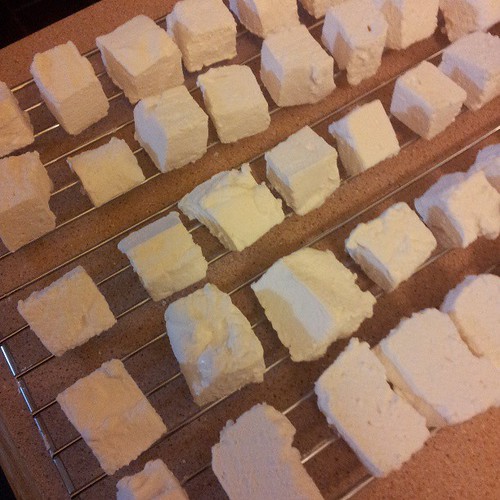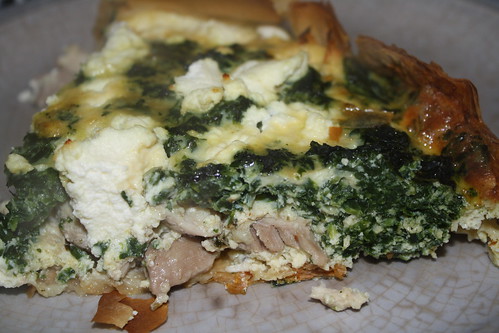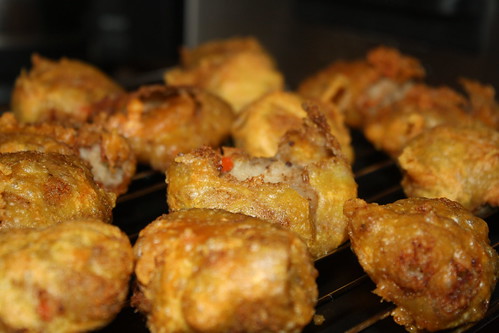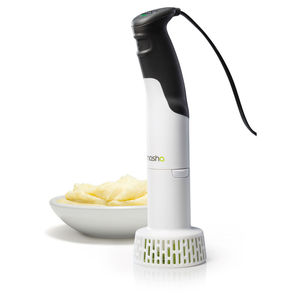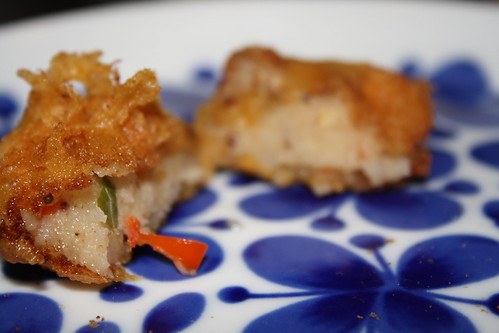Without thinking about it too much, earlier this year I signed up for The Sweet Swap. This is a fund raising blogging event, where bloggers make something sweet and send it off to mystery matches, Kris Kringle style.
And then I did think about it and I realised that I never really make anything that I might be able to send through the post.
Panic!
So I’ve been thinking about sweets more than normal and the rejects (from the point of view of The Sweet Swap) may appear here as posts over the next couple of weeks. I start with marshmallow: I actually asked Andy if he would prefer marshmallow or sweet x and he chose marshmallow. I hate marshmallow so I was really cooking blind here.
I knew there was a recipe in James Martin’s Desserts so I dug it out, had a read, and realised it shouldn’t be too hard.
The big thing with marshmallow is that you need to be careful with the sugar temperature when you add the gelatine. Apparently gelatine loses its setting properties above 130°C, so you need to make sure the sugar is below that (naturally, you also don’t want the sugar to be taking on any colour).
The little bit of faff with a thermometer aside, this was super easy* to put together. And as the small eating machine that is our toddler grows bigger, I’m sure having sweets like this in my repertoire won’t be time wasted!
Andy rated the marshmallow very highly – but you’ll have to take his word for it, because I still hate the stuff!!!
* Super easy if you have some experience in the kitchen. If you genuinely consider yourself a novice, perhaps don’t start here!
Ingredients
- 227g caster sugar
- ½ tbsp liquid glucose
- 100 mL water
- 4½ sheets gelatine (platinum strength)
- 70mL cold water
- 1 egg white
- splash of vanilla extract
- red food colouring (optional)
- corn flour & icing sugar for dusting
- a sugar thermometer is essential
Instructions
- Begin by putting the sugar, liquid glucose and water in a saucepan. Choose a reasonably heavy bottomed one because you need to have some control over the heat. Bring to the boil and cook until it reaches 127°C.
- I found that I hit the 110°C mark quite quickly but it took a while after that to hit the 127, so you do have a little time on your hands.
- While the sugar mix is boiling: soak the gelatine in the cold water and beat the egg white until stiff.
- When the syrup comes to temperature, remove from the heat and slide in the gelatine and its water. Take care as it may spit and obviously it's very hot! Gently stir to dissolve the gelatine.
- Start beating the egg white again and slowly pour in the hot syrup and gelatine mix.
- The mixture will thicken quickly and will be like super glossy, super thick meringue. Add the vanilla extract (and food colouring, if using) and continue beating for a good 5+ minutes. You're waiting for the mixture to both cool and become extremely thick.
- It's ready when it clings to the whisk, holds its shape and is really almost the texture and consistency of foam.
- Using a hot sugar mix like this (the process is not dissimilar to Italian meringue) means that the marshmallow is extremely stable so you don't have to rush to get things done.
- Lightly grease (using a flavourless oil!) a baking tray or dish. I used a ~ 20 x 27 cm baking dish. Dust the base with a mixture of sifted cornflour and icing sugar.
- Spoon in the marshmallow: this should be hard work because the mixture is so stiff. Spread it evenly throughout the dish as best you can and level with a palette knife (wet and/or hot may help).
- Put in the fridge for a minimum of one hour to set.
- Dust your work surface with sifted icing sugar and cornflour. Tip the marshmallow out and cut into bit size pieces. Roll each piece in the icing sugar/cornflour mix and set on a rack to dry out.
- Store in an airtight box.

